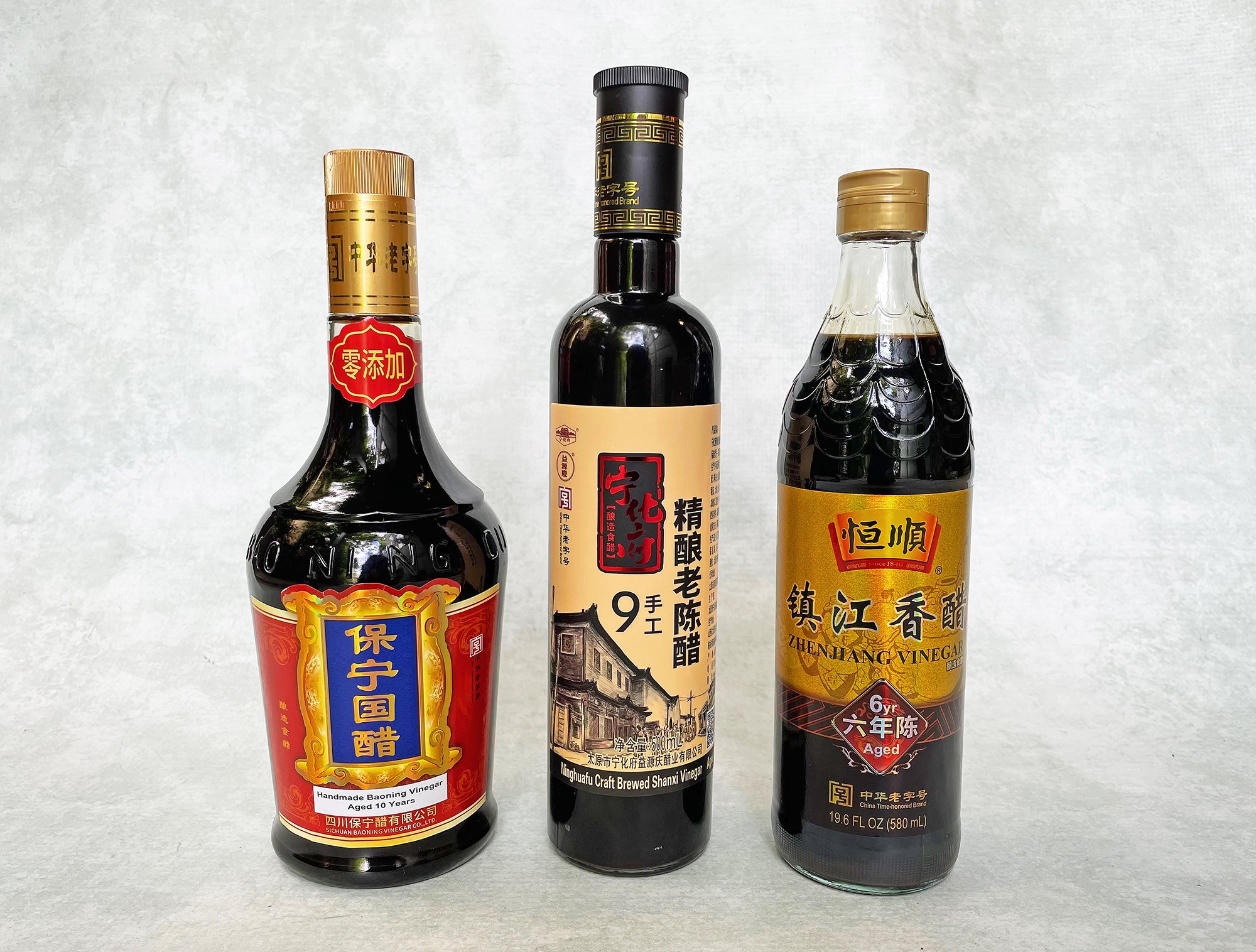|
This Famous Chinese Vinegars Collection includes our entire vinegar line with a 10% discount because we want you to try them all!
Granted, three bottles of premium Chinese vinegar may be too much for your average cook, but if you are an aficionado of regional Chinese cuisines or a vinegar and fermentation obsessive, then this collection is for you. And, yes, they all taste distinctly different from each other!
China actually has Four Famous Vinegars, and this collection includes the most famous three, including Sichuan's Baoning vinegar, Shanxi's Ninghuafu mature vinegar and Jiangsu's Zhenjiang vinegar. (All that's missing is Fujian's red yeast rice vinegar, coming to The Mala Market sometime in the future.)
These vinegars make a literal tour of the country and its cuisines, from Sichuan in the west to Shanxi in the north to Jiangsu in the east. Each company has been making vinegar (as various entities) for hundreds of years, and each bottle is their top-of-the-line commercial offering, aged from 6 to 10 years. The Mala Market is the exclusive U.S. importer of the Sichuan Baoning and Shanxi Ninghuafu aged vinegars.
Characteristics of China's Famous Vinegars:
- "Black vinegars," with a deep red-brown hue
- Made from a mix of grains in a process with dozens of steps
- Completely natural fermentation from wild microorganisms specific to their locale
- No additives or preservatives
- Long aged, from 6 to 10 years
- China Time-Honored Brands, in production for hundreds of years
- Non-GMO, Vegan
- Infinite shelf life
This Collection Includes:
Baoning Handcrafted Black Vinegar, Aged 10 Years, 24 ounces: Representing southwest China, Sichuan's Baoning vinegar is unique among the famous vinegars in being an herbal vinegar. It is called so because its qu, or fermentation starter, is made from dozens of herbs and spices used in Traditional Chinese Medicine. It does not take like medicine, but it does have a distinctly savory taste and is less sweet than its fellow famous vinegars. It has a bill of six grains, and the lead grain is wheat bran. Use it in Sichuan food and other Southwest cuisines, and particularly in Sichuan sauces for cold dishes.
Ninghuafu Handcrafted Shanxi Mature Vinegar, Aged 9 Years, 17 ounces: Representing China's north, Shanxi mature vinegar is sorghum-based and is the most robust of the famous four. It includes roasted grains, which darken the color and give it a slight tinge of smoke. This vinegar is recommended for dishes with long cook times, as it can stand up to the heat in braised and steamed dishes, but in Shanxi it also goes straight into the bowl as a topper of any broth or noodle. Being Northern, it has an affinity not only for wheat noodles, dumplings and bao, but also for beef and lamb.
Hengshun Zhenjiang Handcrafted Vinegar, Aged 6 Years, 20 ounces: Still often called by its old name of Chinkiang in the West, Zhenjiang is the most famous of the famous vinegars in the U.S. because Eastern exporters in Jiangsu province got a head start. Ninety percent of China's vinegar exports are Zhenjiang, but the majority of those are the cheap supermarket version, aged for 6 months. This premium version is aged 6 years, and the difference is eminently noticeable. Glutinous rice is the lead grain in this bold and every so slightly sweet vinegar, making it very versatile across Chinese cuisines.
Western recipes always call for Zhenjiang vinegar because for decades it was the only Chinese black vinegar widely available outside China. But now you have so many options, and we highly recommend matching the vinegar to the cuisine and type of dish you are cooking. Then again, we also recommend just using your favorite in whatever way you want!
|

